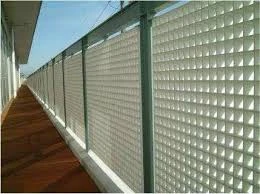
-
 Afrikaans
Afrikaans -
 Albanian
Albanian -
 Amharic
Amharic -
 Arabic
Arabic -
 Armenian
Armenian -
 Azerbaijani
Azerbaijani -
 Basque
Basque -
 Belarusian
Belarusian -
 Bengali
Bengali -
 Bosnian
Bosnian -
 Bulgarian
Bulgarian -
 Catalan
Catalan -
 Cebuano
Cebuano -
 China
China -
 China (Taiwan)
China (Taiwan) -
 Corsican
Corsican -
 Croatian
Croatian -
 Czech
Czech -
 Danish
Danish -
 Dutch
Dutch -
 English
English -
 Esperanto
Esperanto -
 Estonian
Estonian -
 Finnish
Finnish -
 French
French -
 Frisian
Frisian -
 Galician
Galician -
 Georgian
Georgian -
 German
German -
 Greek
Greek -
 Gujarati
Gujarati -
 Haitian Creole
Haitian Creole -
 hausa
hausa -
 hawaiian
hawaiian -
 Hebrew
Hebrew -
 Hindi
Hindi -
 Miao
Miao -
 Hungarian
Hungarian -
 Icelandic
Icelandic -
 igbo
igbo -
 Indonesian
Indonesian -
 irish
irish -
 Italian
Italian -
 Japanese
Japanese -
 Javanese
Javanese -
 Kannada
Kannada -
 kazakh
kazakh -
 Khmer
Khmer -
 Rwandese
Rwandese -
 Korean
Korean -
 Kurdish
Kurdish -
 Kyrgyz
Kyrgyz -
 Lao
Lao -
 Latin
Latin -
 Latvian
Latvian -
 Lithuanian
Lithuanian -
 Luxembourgish
Luxembourgish -
 Macedonian
Macedonian -
 Malgashi
Malgashi -
 Malay
Malay -
 Malayalam
Malayalam -
 Maltese
Maltese -
 Maori
Maori -
 Marathi
Marathi -
 Mongolian
Mongolian -
 Myanmar
Myanmar -
 Nepali
Nepali -
 Norwegian
Norwegian -
 Norwegian
Norwegian -
 Occitan
Occitan -
 Pashto
Pashto -
 Persian
Persian -
 Polish
Polish -
 Portuguese
Portuguese -
 Punjabi
Punjabi -
 Romanian
Romanian -
 Russian
Russian -
 Samoan
Samoan -
 Scottish Gaelic
Scottish Gaelic -
 Serbian
Serbian -
 Sesotho
Sesotho -
 Shona
Shona -
 Sindhi
Sindhi -
 Sinhala
Sinhala -
 Slovak
Slovak -
 Slovenian
Slovenian -
 Somali
Somali -
 Spanish
Spanish -
 Sundanese
Sundanese -
 Swahili
Swahili -
 Swedish
Swedish -
 Tagalog
Tagalog -
 Tajik
Tajik -
 Tamil
Tamil -
 Tatar
Tatar -
 Telugu
Telugu -
 Thai
Thai -
 Turkish
Turkish -
 Turkmen
Turkmen -
 Ukrainian
Ukrainian -
 Urdu
Urdu -
 Uighur
Uighur -
 Uzbek
Uzbek -
 Vietnamese
Vietnamese -
 Welsh
Welsh -
 Bantu
Bantu -
 Yiddish
Yiddish -
 Yoruba
Yoruba -
 Zulu
Zulu
Durable and Lightweight Solutions with Fiberglass Piping for Various Applications
The Importance of Fiberglass Pipes in Modern Infrastructure
In the modern era, where infrastructure and construction are continually evolving, the materials used for piping systems play a crucial role in determining the longevity and efficiency of various applications. One material that has gained significant attention in recent years is fiberglass. Fiberglass pipes, known for their durability, lightweight nature, and resistance to corrosion, are increasingly being utilized in various industries, ranging from water management to oil and gas transportation.
What are Fiberglass Pipes?
Fiberglass pipes are composite materials made from a combination of glass fibers and resin. This unique composition results in a product that is not only lightweight but also exceptionally strong. Unlike traditional materials such as steel or concrete, fiberglass pipes can withstand high pressures and extreme temperatures, making them ideal for a wide variety of applications.
Advancements in Manufacturing
The advancements in manufacturing processes have significantly improved the quality and performance of fiberglass pipes. Techniques such as filament winding and pultrusion allow for precision in creating pipes with uniform thickness and strength. These modern methods ensure that the pipes can meet the stringent demands required by various industries.
Advantages of Fiberglass Pipes
One of the primary advantages of fiberglass pipes is their resistance to corrosion. Traditional metal pipes often succumb to rust and chemical damage, leading to leaks and expensive repairs. In contrast, fiberglass pipes are immune to such deterioration, making them suitable for transporting aggressive chemicals and waste products.
Additionally, the lightweight nature of fiberglass pipes allows for easier handling and installation. Construction crews can transport and install fiberglass pipes with less effort and at a lower cost compared to heavier materials. This lightweight characteristic also reduces the load on supporting structures, contributing to the overall safety and integrity of the installation.
fiberglass pipe

Environmental Benefits
As the world increasingly prioritizes sustainability, fiberglass pipes offer an eco-friendly alternative. The production of fiberglass requires less energy compared to metals and, once installed, these pipes can last for decades without needing replacement. This longevity minimizes waste and the need for frequent repairs, aligning with global sustainability goals.
Moreover, fiberglass pipes are often manufactured using recyclable materials and can themselves be recycled at the end of their life cycle. This recycling capability contributes to a reduced environmental impact and promotes a circular economy within the construction industry.
Applications of Fiberglass Pipes
The versatility of fiberglass pipes allows them to be used in various applications. In water distribution systems, they provide reliable and leak-free service for both potable and non-potable water. In the oil and gas industry, fiberglass pipes are utilized to transport hydrocarbons and other chemicals safely, often replacing steel pipes in environments that are prone to corrosion.
Additionally, agriculture has benefited from the use of fiberglass pipes for irrigation systems, where the need for durability and resistance to environmental factors is paramount. Their application in wastewater management further underscores their importance, as they can handle the corrosive nature of sewage without degrading over time.
Conclusion
As the construction and infrastructure sectors evolve, the shift towards utilizing fiberglass pipes signifies a promising future. Their numerous advantages—such as durability, lightweight characteristics, corrosion resistance, and environmental sustainability—make them an ideal choice for a broad spectrum of applications. As industries continue to innovate and adapt to new challenges, fiberglass pipes will undoubtedly play a pivotal role in shaping the infrastructure of tomorrow. Embracing this advanced material will not only enhance operational efficiency but also contribute to a greener and more sustainable future for generations to come.









